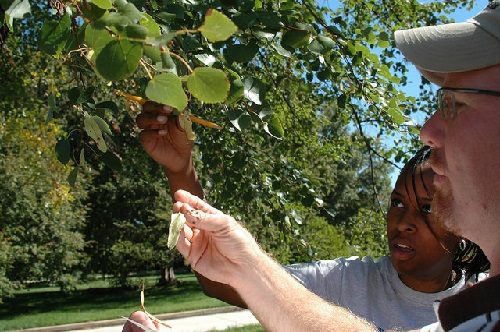October 21, 2016
 There is historic new federal funding available for environmental education through the Every Student Succeeds Act (ESSA). The new grant program under Title IV, Part A, Student Support and Academic Enrichment Grants will help states, districts, and schools provide students with a more well-rounded education. It focuses on safe and healthy students, how technology can be integrated into schools to improve teaching and learning, as well as emphasizing a variety of disciplines that provide a well-rounded education — including environmental education.
There is historic new federal funding available for environmental education through the Every Student Succeeds Act (ESSA). The new grant program under Title IV, Part A, Student Support and Academic Enrichment Grants will help states, districts, and schools provide students with a more well-rounded education. It focuses on safe and healthy students, how technology can be integrated into schools to improve teaching and learning, as well as emphasizing a variety of disciplines that provide a well-rounded education — including environmental education.
Environmental education programs like Project Learning Tree can provide school systems with curriculum that’s already aligned with state standards and teacher professional development that has been tested and proven over many years. This combined with an extensive professional network that offers local resources and on-the-ground support means school districts across the country can easily connect classrooms to their local environment to provide students with a well-rounded education.
Learn About this Funding
Share this invitation with your school superintendent to help your school system access this funding and build environmental education programs for all students.
- Dr. Kevin Maxwell, CEO of Prince George’s County Public Schools, Maryland, and Ms. Anne Campbell, Superintendent of San Mateo County Schools, California, along with Congressman John Sarbanes and a representative from the U.S. Department of Education, will host a webinar on October 27, 1-2 pm EDT to explain more about this funding. View a recording of this webinar.
Review the U.S. Department of Education’s non-regulatory guidance for the Student Support and Academic Enrichment Grants. In this guidance document, the U.S. Department of Education highlights Project Learning Tree in particular as a resource for environmental education! Refer to page 24: Environmental education (ESEA section 4107(a)(3)(G)) which states: An LEA (local education agency) may use funds for activities in environmental education, which is generally understood as instruction that encourages students to develop knowledge, intellectual skills, attitudes, experiences, and motivation to make and act upon responsible environmental decisions. Environmental education is generally understood to be a multi-disciplinary field that integrates disciplines such as biology, chemistry, physics, ecology, earth science, atmospheric science, mathematics, and geography.
- SPOTLIGHT: Many schools across the nation provide environmental education classes for students. Project Learning Tree® (PLT) is one example of an award-winning environmental education program designed for teachers and other educators, parents, and community leaders working with youth from preschool through grade 12. PLT provides educators with supplementary curriculum materials, professional development, and resources to integrate environmental education into lesson plans for all grades and subject areas and to use the outdoors to engage students in learning about the world around them. GreenSchools, PLT’s service-learning program, inspires students to apply STEM (science, technology, engineering, and math) to create greener and healthier schools by reducing energy and water use, improving their school site, recycling, and other projects that also save schools money. Program evaluations demonstrate that PLT’s GreenSchools program contributes positively to important outcomes in student learning and engagement including students’ presentation, writing, planning, problemsolving, technology, leadership and teamwork skills. https://www.plt.org/
 Why Environmental Education is Important
Why Environmental Education is Important
Environmental education provides students with robust, real-world learning experiences that bolster STEM learning, civic engagement, and prepare students for the challenges and opportunities of the 21st century workforce.
“Environmental education provides important opportunities for students to become engaged in real world issues that transcend classroom walls,” says Ms. Campbell, California’s Superintendent of San Mateo County Schools. “They can see the relevance of their classroom studies to the complex environmental issues confronting our planet and they can acquire the skills they’ll need to be creative problem solvers and powerful advocates.”
For more information about the importance of environmental education, you can also refer your superintendent, school district supervisor, or curriculum coordinator to these articles on PLT’s website:
- Top Ten Benefits of Environmental Education
- Information about Project Learning Tree for School Administrators
Superintendents’ Environmental Education Collaborative
The October 27 webinar and other initiatives are being organized by the Superintendents’ Environmental Education Collaborative whose goal is to increase high quality environmental education for students across the nation. Project Learning Tree is a lead partner in this collaborative along with superintendents, the North American Association of Environmental Education, and Upstream Alliance.
In addition to the webinar, the Collaborative will:
- provide school systems guidance on applying for funding and building model environmental education programs
- lead a session “Environmental Education in ESSA” on March 2, 2017 at the American Association of School Superintendents annual conference in New Orleans
- organize an immersion field trip via bus and swamp boat as part of the Superintendents conference to investigate climate change issues in Louisiana and the role of environmental education.


